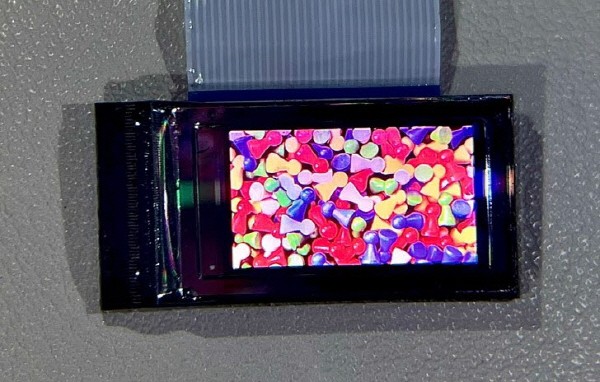Utilizes independently developed ultra-high resolution FMM
Emits with RGB organic matter without color filters
Vastly superior in brightness, quality, contrast ratio
Level of invar processing at 8㎛…

APS Holdings became the world’s first to succeed in developing a 3000PPI (Pixels Per Inch) RGB micro-OLED display. As an AR & VR display utilizing an independently developed ultra-high resolution fine metal mask (FMM), it is expected to accelerate the blooming of the AR & VR device market. APS Holdings is seeking technical cooperation and commercialization by providing panel and AR & VR device companies in Korea and overseas with samples.
The micro-OLED developed by APS Holdings uses an RGB method with organic light-emission to produce colors, rather than using color filters. They were able to overcome the technical limitations of white OLED, where the brightness of the light weakens as it passes through color filters. In addition to the brightness, there is also a significant improvement in performance in image quality and contrast ratio as well. The development of micro-OLED AR & VR displays is currently mainly done with white OLED, but it is projected that the progress made by APS Holdings will lead to a switch in technology.
RGB micro-OLED draws attention as next-generation AR & VR displays, but the technical difficulty is very high. A leading example of this is FMM, thin metal plates that are used in RGB pixel deposition. Ultra-high resolution FMM are needed deposit OLED through the tiny holes in the metal plates to create high-performance displays.
Since 2018, APS Holdings was able to secure ultra-thin invar and hole processing technology, which are key technologies for FMM. They developed ultra-precision technology that maintains variations in thickness and physical properties by processing materials thinner than the human hair. In addition to internalizing technology, the company was able to break away from existing methods of developing and manufacturing FMM by operating an independent ultra-thin invar processing line and cooperating with separate companies like steel companies,
They were able to use APS Holdings’ own technology to reach thicknesses of 8 micrometers (㎛) in 3000PPI FMM invar processing. Considering that the invar thickness of FMM used in QHD smartphone production is 18㎛, they were able to gain a competitive advantage. They were also able to stabilize the supply network by receiving supplies of invar from companies in other countries, such as Japan.
Another characteristic is their choice in using a laser method for processing ultra-fine holes in FMM. APS Holdings explained that the laser method enables better ultra-precise processing than chemical methods (etching). The performance of APS Holdings’ laser processing equipment has been improved to be able to process up to a level of 4000PPI.
Following the development of a 1000PPI level FMM in the beginning of the year, APS Holdings now succeeded in the development of a 3000PPI level FMM, putting them a step ahead in the commercialization of RGB micro-OLED. Based on FMM, they were able to independently develop technology for deposition and encapsulation processes needed in panel production, proving APS Holding’ capacity to produce RGB OLED display panels as well.
APS Holdings said that, “The success of the development of 3000PPI RGB micro-OLED will bring a change in the direction of development of micro displays in the markets of panels and VR & AR devices,” and revealed that, “The time for the commercialization of RGB OLED will be significantly earlier than expected.”
By Staff Reporter Dongjoon Kwon (djkwon@etnews.com)